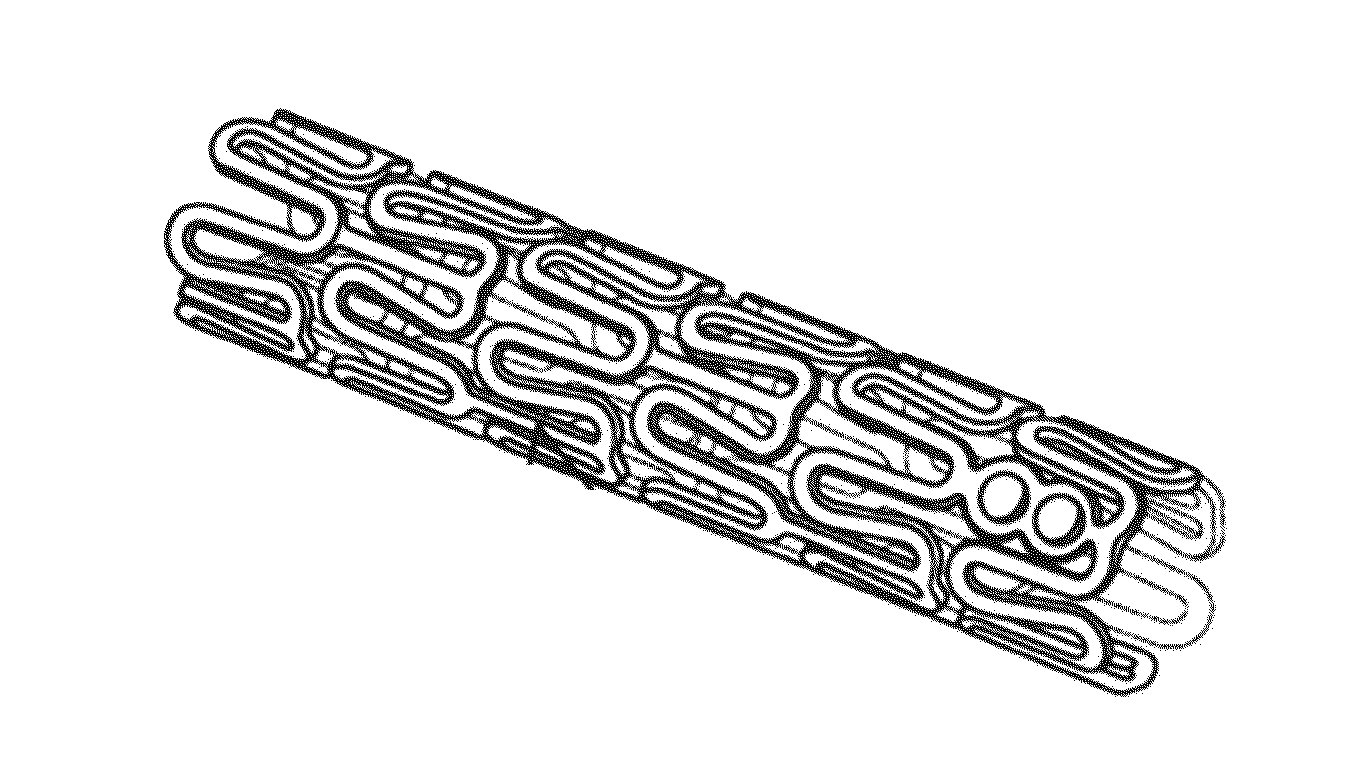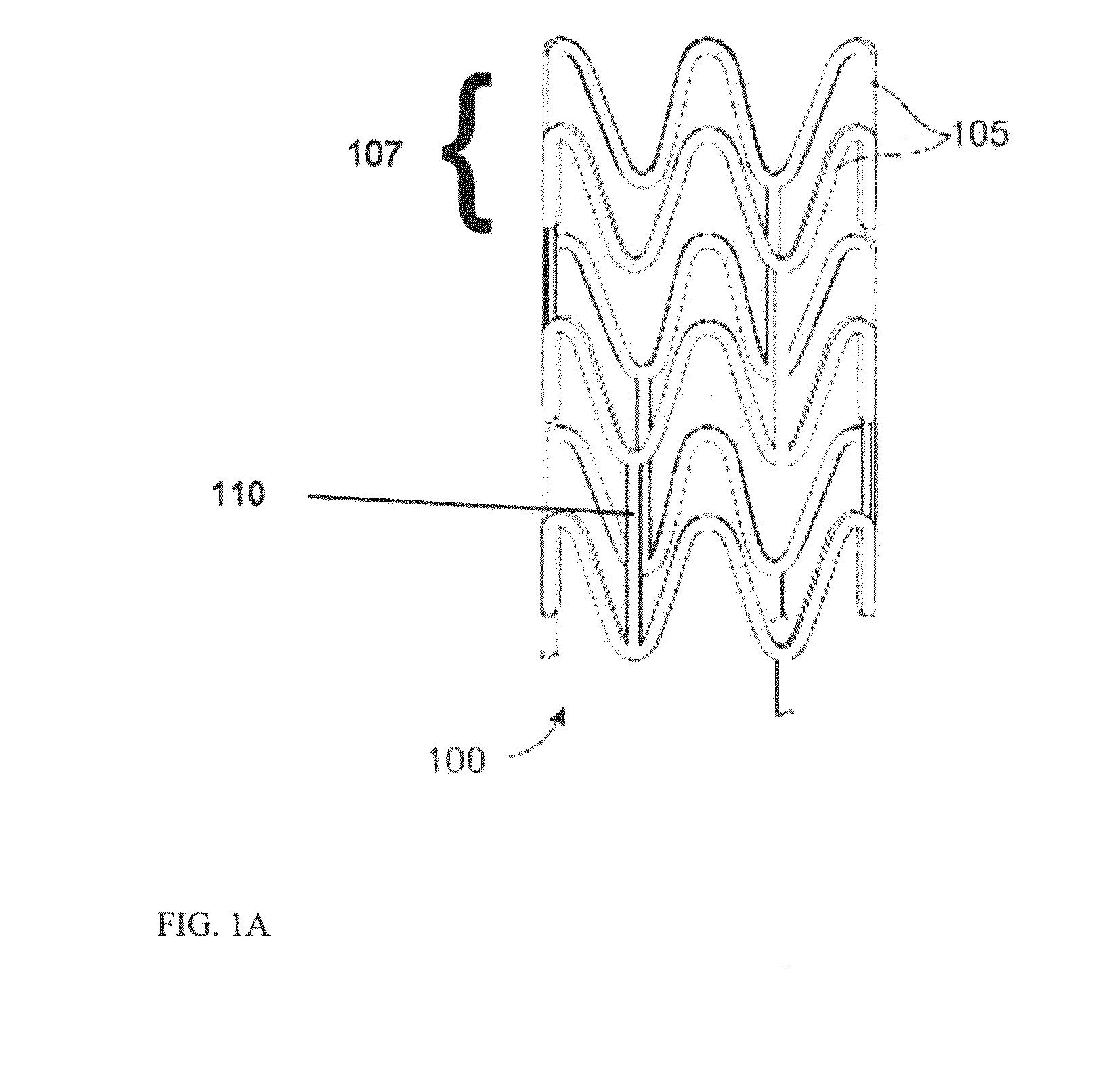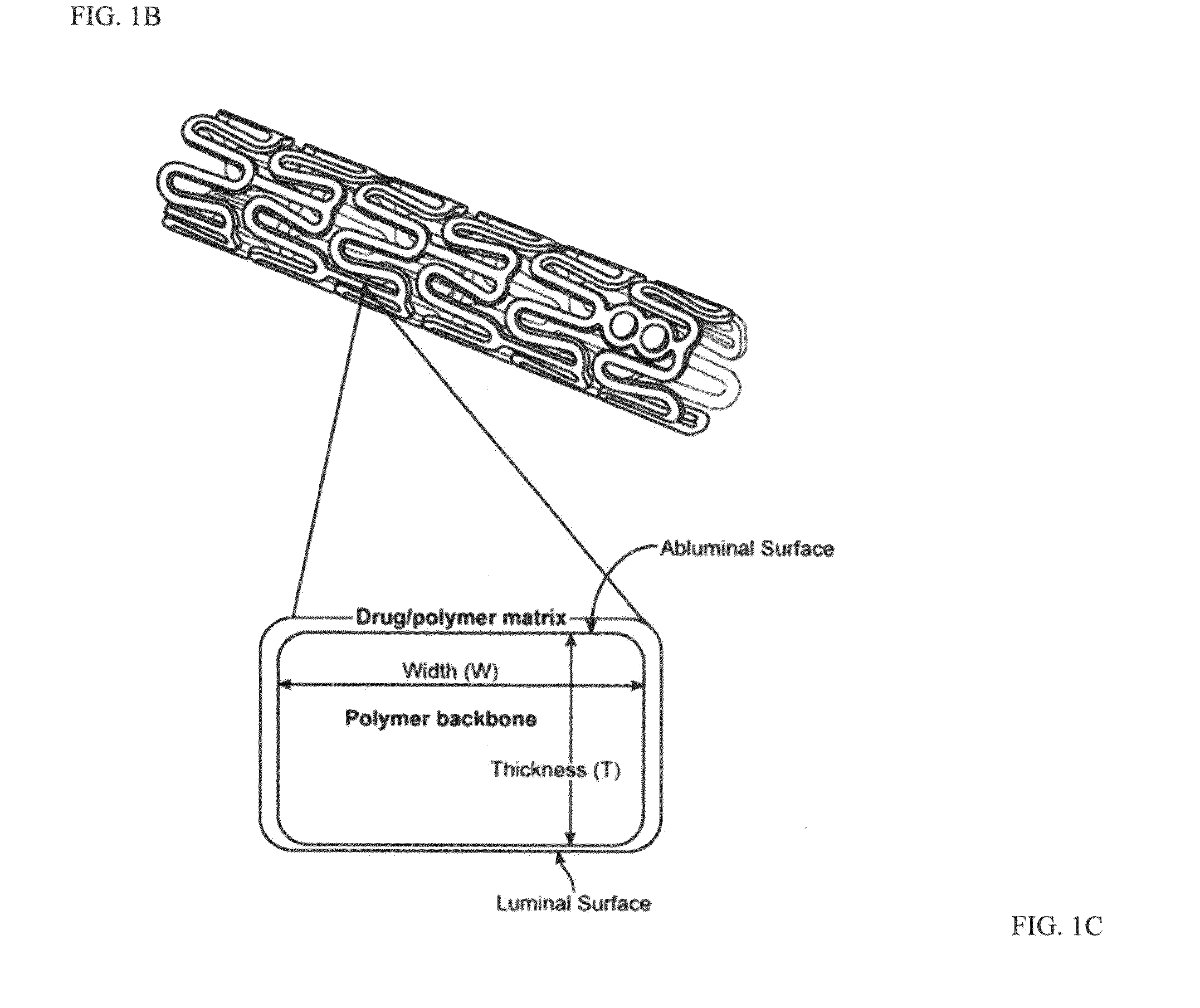Methods of treatment directed to neointimal proliferation generated by endothelial shear stress patterns from drug-eluting bioresorbable vascular scaffold implantation
a bioresorbable polymer and endothelial shear stress technology, applied in the field of human patients' bioresorbable polymer scaffold treatment, can solve the problems of embolic events, failure to meet the stent, and stint thrombosis, and achieve the effect of reducing the risk of late scaffold thrombosis
- Summary
- Abstract
- Description
- Claims
- Application Information
AI Technical Summary
Benefits of technology
Problems solved by technology
Method used
Image
Examples
Embodiment Construction
[0041]Embodiments of the present invention include treatment of coronary artery disease and peripheral artery disease with bioresorbable polymer stents. The bioresorbable stents can include a support structure in the form of a scaffold made of a material that is bioresorbable, for example, a bioresorbable polymer such as a lactide-based polymer. The scaffold may be made partially or completely of a bioresorbable polymer. The scaffold may include non-polymer and / or nonbiodegradable parts or additives. The scaffold is designed to completely erode away from an implant site after treatment of an artery is completed. The scaffold can further include a drug, such as an antiproliferative or anti-inflammatory agents. A polymer coating disposed over the scaffold can include the drug which is released from the coating after implantation of the stent. The polymer of the coating is also bioresorbable.
[0042]The treatment methods can apply to bioresorbable scaffolds for both coronary and peripher...
PUM
 Login to View More
Login to View More Abstract
Description
Claims
Application Information
 Login to View More
Login to View More - R&D
- Intellectual Property
- Life Sciences
- Materials
- Tech Scout
- Unparalleled Data Quality
- Higher Quality Content
- 60% Fewer Hallucinations
Browse by: Latest US Patents, China's latest patents, Technical Efficacy Thesaurus, Application Domain, Technology Topic, Popular Technical Reports.
© 2025 PatSnap. All rights reserved.Legal|Privacy policy|Modern Slavery Act Transparency Statement|Sitemap|About US| Contact US: help@patsnap.com



